CNN
—
At first glance, winning seems impossibly easy for Diede de Groot; an almost nonchalant habit of 69 consecutive victories, yielding a Golden Slam – all four grand slams and a Paralympic gold medal – in 2021, followed by a calendar grand slam in 2022.
Together, these achievements amounted to a back-to-back calendar grand slam never before achieved in tennis as De Groot completed the set with victory at this year’s US Open in the wheelchair women’s singles, confirming her status as the most dominant player of her generation.
But in the wake of such an impressive run, winning every tournament she enters has become expected, creating more pressure with every victory.
“There’s so much pressure. Even last year, that Golden Slam was like a little bit of a dark cloud hanging over the year,” De Groot tells CNN Sport.
“Everything was going well but there was this big cloud of pressure just pushing on the fact that [everyone thought] I was the one that was going to do it, but I didn’t know if I was going to be able to do it.”
As the year progressed, the 25-year-old ticked off each milestone of a Golden Slam and, despite the mounting pressure, she dropped just two sets along the way, and added three grand slam doubles titles as well as another Paralympic gold medal in doubles for good measure.
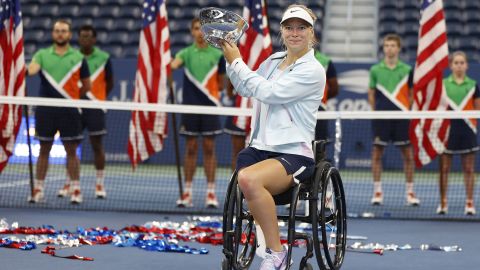
This year, she continued her extraordinary form, once again sweeping the singles grand slams and picking up another three in doubles.
But rather than becoming lost amid all this pressure, De Groot focuses on the smaller things, setting her own goals for each match unrelated to the result and marking each win by enjoying a “chilled night” with her coach.
“We’re also just so happy to be back home and be with family because I feel like my family knows what I do for it the most,” she says.
“They know what I have to go through and what it means for me. So really, when I’m with the family, they know what troubles I’ve gone through to get that plate or that trophy … And I think that’s my part of looking back and celebrating a little bit.”
For all these accomplishments, it was only a twist of fate that De Groot ever picked up a tennis racket aged seven, as part of a rehabilitation program following surgeries on her right leg which is shorter than her left leg.
“They just said to me, ‘Would you like to play tennis because it’s near your house?’” she recalls.
“And I thought, my grandmother’s playing, some of my cousins are playing. And so I started playing.”
First invented in 1976, wheelchair tennis is played according to exactly the same rules as able-bodied tennis, except that players can let the ball bounce twice.
“I initially loved it because I was the same as all the other kids that were in the group,” De Groot adds.
“All of us struggled a little bit with the wheelchair and holding the racket … Maybe with my friends sometimes I felt like I was a little bit different because sometimes I couldn’t walk as long or couldn’t run as fast.”
In time, De Groot began playing national wheelchair tennis tournaments where, without age categories, she faced players in their twenties, thirties and even forties, before she was scouted for the Dutch national program and invited to international junior tournaments.
While still a junior, De Groot trained at the National Center, playing with Aniek van Koot and Jiske Griffioen, who were then world No. 1 and No. 3 respectively.
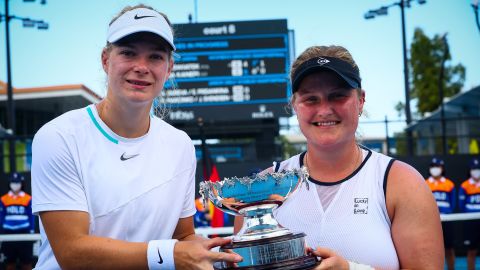
“I could really see how it was done, and I could maybe even see what they were doing and then look at myself and think, ‘Can I do it like that? Or do I make it even better?’” she says.
“And I owe so much of what I’ve learned today from them because I was allowed to train with them.”
Once De Groot reached the professional circuit, her potential was quickly evident as she won a grand slam at the third attempt, but her early career weaknesses became visible too.
“In the last two years, my mental game has gone up so much,” she says. “Before, I was good at tennis and I could already hit the shots that I am hitting today. But then in my head, sometimes I would just lose it.”
Playing in her first grand slam at the 2017 Australian Open, De Groot was defeated by Sabine Ellerbrock in the opening round – her only loss to the German in their 19 career meetings.
Shortly afterwards, she crashed out of the French Open in the first round again after failing to convert her own match points, she recalls.
“Then at Wimbledon … I was like, ‘Okay, so I’ve lost my first match, I had chances to win my first match in my second tournament, but that didn’t happen, now I’m just going to enjoy it,’ and I think that’s what I did for the whole tournament,” De Groot says.
“I really had no expectations and maybe that was the key to winning that first one.”
When she won that first grand slam, De Groot was just 20 years old and unencumbered by the expectations she now faces.
“The actual surprise feeling [after winning] has left, but still the feeling of pride and stuff, I think that’s grown over the years because I’ve just noticed how gradually the pressure gets on, like it gets more and more,” she adds.
“And my opponents … they make it harder and harder on me each time I play them. So I know each time it’s getting more difficult to keep up the winning streak.”
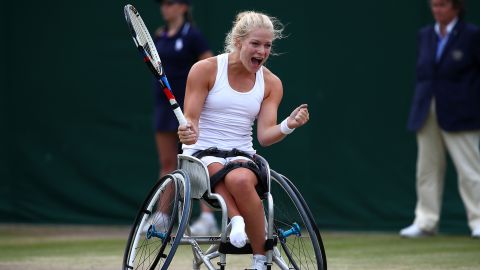
At every stage of her career, De Groot has been challenged by her great rival Yui Kamiji. Between them, the two women have won 22 of the last 23 grand slam tournaments, with Kamiji’s defensive brilliance providing the perfect counterpart to De Groot’s more aggressive style.
“She hit certain shots that none of the other players did so I made sure that in my training sessions I would train on those shots,” De Groot says.
“Yui has taught me to be more patient and to really wait for my chances. I think we’ve made each other cleverer players.”
Even during De Groot’s relatively short career to date, the profile of wheelchair tennis has increased dramatically.
Wimbledon only introduced wheelchair singles into its program in 2016 – the year before De Groot’s title-winning debut – while the wheelchair tennis tournaments at the Australian Open were held on different dates to the rest of the grand slam for their first five editions until 2007.
“We would sort of be there, but we weren’t included,” De Groot says, recalling stories from other players.
“So it was a little bit like it’s called the Australian Open, but really it’s not inclusion at all. If you look at it now, we’re at the same time, we play on the same courts, we use the same locker room and so there’s so many differences and such big changes have already happened.”
This year, 16 players featured in the men’s and women’s wheelchair singles at the US Open – the largest ever field at a grand slam – while a junior tournament was also held there for the first time, and the ITF Wheelchair Tennis Tour now contains over 150 events.
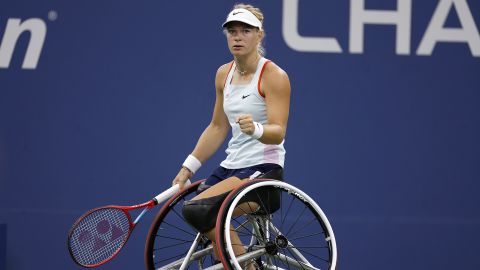
There is still a long way to go, however.
As De Groot points out, more visibility is needed for wheelchair tennis players so that the bigger courts on which they now play, such as the Louis Armstrong Stadium at the US Open or No.1 Court at Wimbledon, are filled by fans.
“My dream is to get wheelchair tennis to a place where people actually buy tickets to go and see us,” De Groot says.
“I don’t expect anyone to give up their Nadal ticket to swap it for us. But it would be great to have just some people be like, you know what, I’m going to go to Wimbledon today just to see the wheelchair tennis because they’re so amazing.”
Note:- (Not all news on the site expresses the point of view of the site, but we transmit this news automatically and translate it through programmatic technology on the site and not from a human editor. The content is auto-generated from a syndicated feed.))
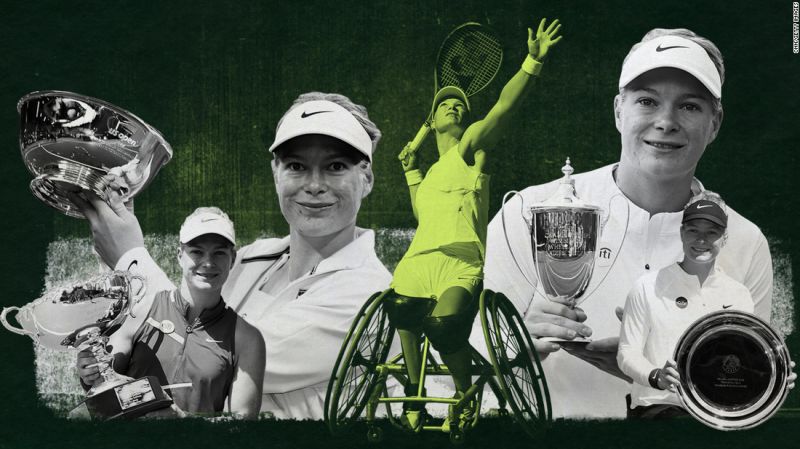



I blog often and I really appreciate your content. The
article has really peaked my interest. I’m going to book mark
your website and keep checking for new information about once per week.
I subscribed to your RSS feed as well.
Woah! I’m really digging the template/theme of
this site. It’s simple, yet effective. A lot of times it’s challenging to get
that “perfect balance” between usability and appearance.
I must say you’ve done a great job with this. In addition, the blog loads
very fast for me on Chrome. Excellent Blog!
Hello, I think your site might be having browser compatibility
issues. When I look at your blog site in Safari, it looks fine but when opening in Internet Explorer, it has some overlapping.
I just wanted to give you a quick heads up! Other then that, superb blog!